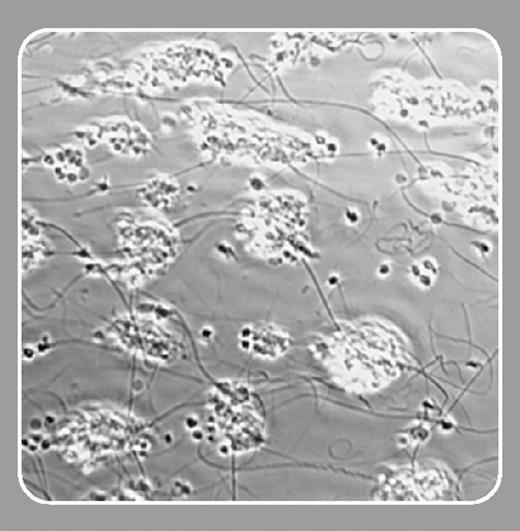Following vessel injury, circulating platelets adhere to and form thrombi on exposed collagen. Traditionally, this response has been mechanistically compartmentalized by assigning adhesive and signaling roles to distinct collagen receptors. Such a neat division of labor fit nicely with the identification of 2 collagen receptors, the integrin α2β1 and the immune receptor homologue glycoprotein VI (GPVI), from protein families with well-defined adhesive and signaling roles. Unfortunately, the experimental data have failed to draw clear lines between adhesive and signaling collagen receptors. The finding that platelet α2β1, like integrin αIIbβ3, requires “inside-out” signals to bind collagen linked any adhesive role for this receptor to prior collagen signals.1 Analysis of knockout mice has further eroded the notion of independent adhesive and signaling receptors: GPVI-deficient platelets lose both adhesion and signaling responses to collagen while α2β1-deficient platelets exhibit near-normal signaling and, in some studies, normal adhesion to collagen under flow.2 Recent work even has revealed that platelet integrins such as α2β1 may couple to many of the same intracellular signaling molecules as GPVI.3,4 It is now clear that the roles of GPVI and α2β1 are not as easy to distinguish as once thought.
Two recent Blood papers address how human GPVI responds to collagen, both alone and with other platelet collagen receptors. Smethurst and colleagues5 used differences in the binding of human and mouse GPVI extracellular domains to a collagen-related peptide and a blocking phage antibody to pinpoint the collagen-binding domain of human GPVI to the region surrounding K59. In this issue, Siljander and colleagues (page 1333) use the same blocking antibody to compare the role of GPVI with that of other collagen receptors during human platelet adhesion and signaling responses to collagen under flow. Remarkably, in both cases results obtained with human GPVI differ from those observed with mouse GPVI. The lysine at position 59 of human GPVI is replaced in mouse GPVI with glutamic acid, a nonconservative substitution. Human platelets treated with blocking anti-GPVI antibody adhere normally to collagen under flow, whereas GPVI-deficient mouse platelets are unable to adhere to collagen under flow.
Do these results indicate that significant species differences will further complicate assigning molecular roles to platelet collagen receptors? Probably not. These discrepancies can be attributed to methodology and to collagen receptor interplay. The mouse studies are genetic: loss of GPVI function is absolute and loss of α2β1 function follows due to loss of GPVI-generated inside-out activation signals. The human studies are pharmacologic: GPVI K59 may be more critical for collagen-related peptide (CRP) responses than for collagen responses, and loss of GPVI function due to blocking antibody is probably not absolute. Similar studies using antihuman GPVI antibody and antimouse GPVI antibody demonstrate that even minute amounts of GPVI signaling are sufficient to activate α2β1 and permit that receptor to play a prominent signaling role.2,6 These studies contribute to a growing body of evidence suggesting that platelet collagen responses are a game of molecular ping-pong between different collagen receptors in which GPVI is the first player to serve.


This feature is available to Subscribers Only
Sign In or Create an Account Close Modal